E-commerce has seen a huge boom in the last years. Where consumers used to stroll around the streets to windowshop in the traditional brick and mortar stores, they now click on “add to cart” and fill up their digital shopping cart. Did you know the average cart abandonment rate is a whopping 69% (source: Baymand institute). That means you are losing nearly 70% of all your potential online sales.
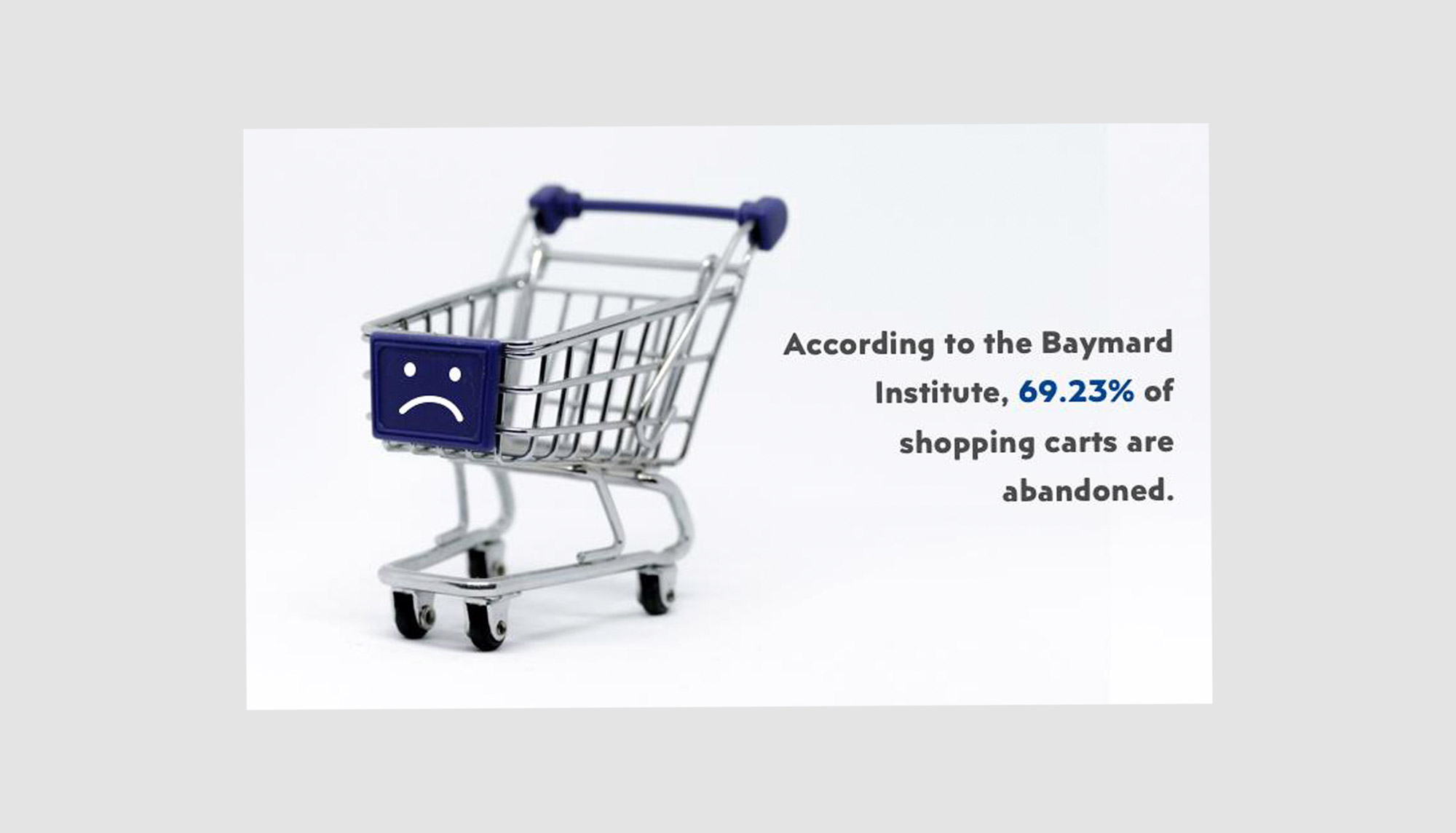
The single largest contributor to abandoned cart is an unclear depiction of the total costs. Shipping fees, taxes and other additional fees that are added to the delivery just when you are ready to pay are a pain in the butt. That is not just our professional opinion, but it also the opinion of 53% of online shoppers. These shoppers will actively walk away from their purchase and go elsewhere.
There are multiple solutions to this problem. But let’s first take a step back and look at the top 10 reasons for abandoned cart and see if we can come up with a cohesive plan to curb your cart abandonment ratio.
Top 10 Reasons for Abandoned Cart
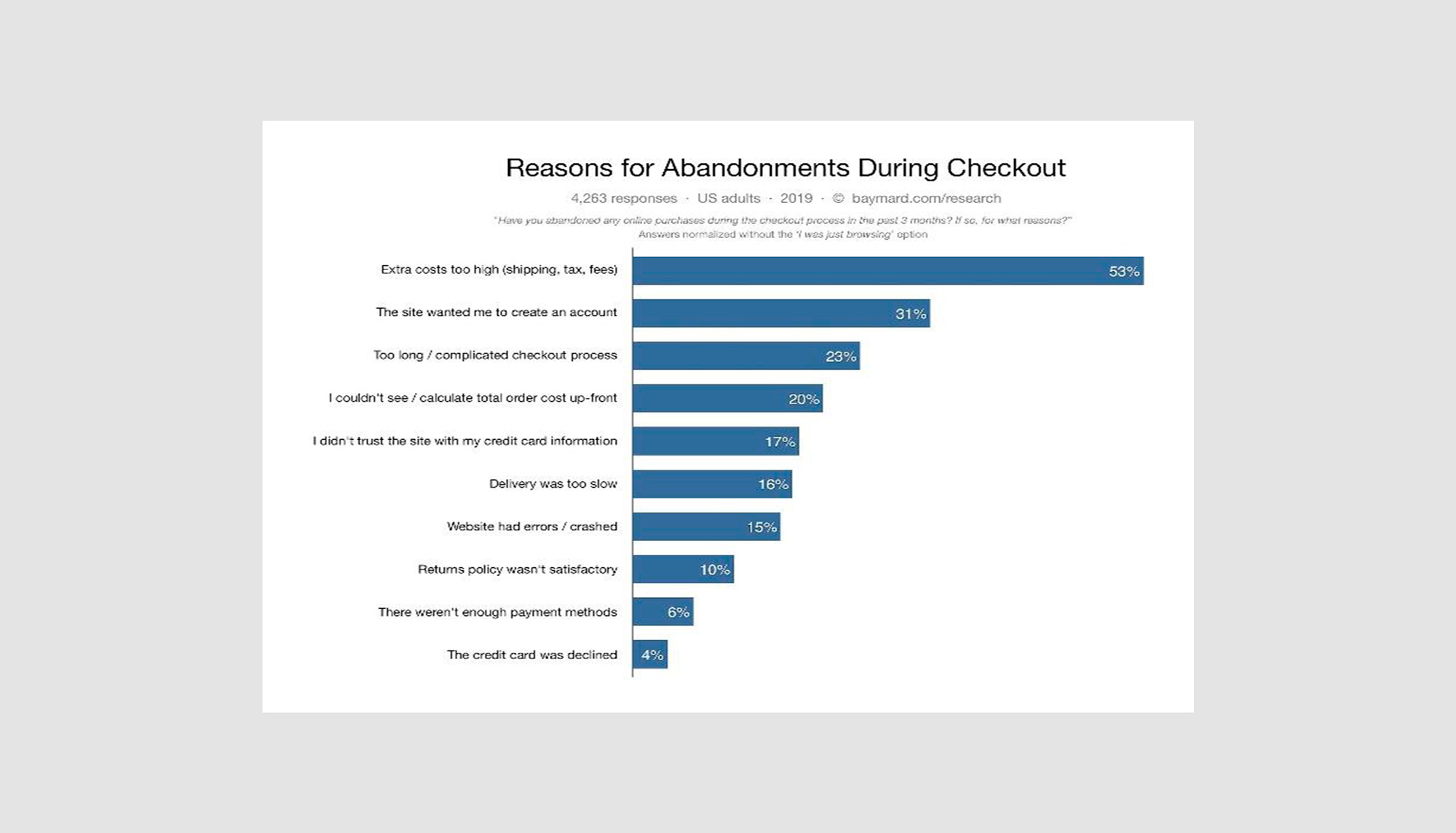
Ok, great now we have an overview. Let’s go through them one by one and see if we can shed a bit of light and potentially provide you with cart abandonment solutions.
- Extra costs are too high (shipping, taxes, additional fees) 53%)
Issue: You have selected the items you would like to purchase, go through the process of filling out all your details hit “next” and all of a sudden your order is a lot more expensive than you were mentally prepared to spend. You somehow feel cheated and decide to go to a different ecommerce retailer, it results in an abandoned cart.
Solution(s): There are a couple of different solutions to this issue. Firstly, you could start by informing your potential customers of the extra costs upfront before they start the process of filling out form to complete the checkout. Many retailers now state “free shipping above X €” at the top or bottom of their page.
Another option is to add the shipping costs (and any potential taxes) as the first step in the checkout process (before the form fields are filled out).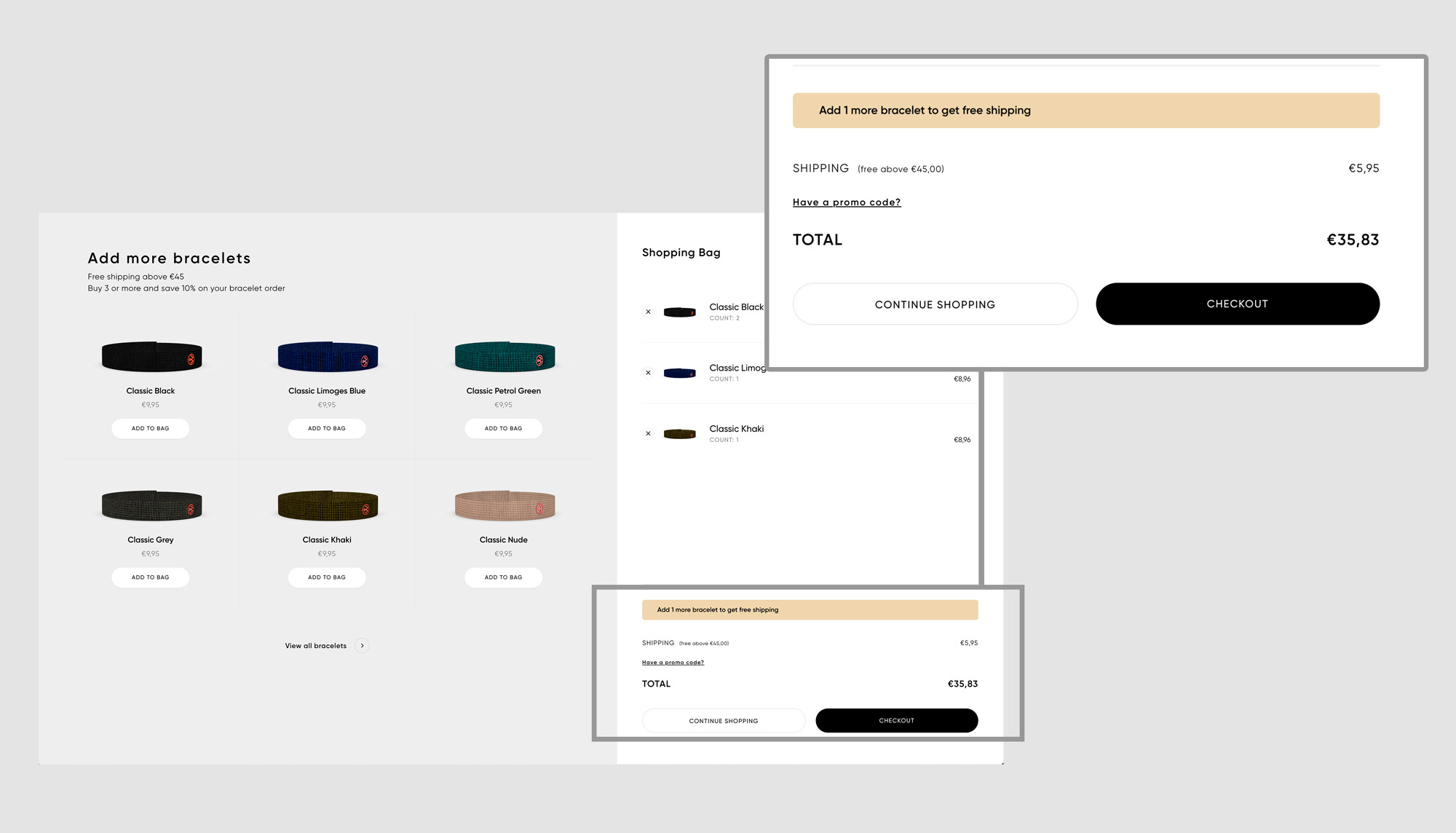
For those who have a high shipping costs there are two potential solutions. Perhaps you can look into offering a discount for items over a certain value (e.g. free shipping as of X €. Or you could offer various options for shipping (slow shipping = free, but next day delivery is a lot more expensive). - The site has no guest access (31%)
Issue: You have gone through the process of selecting the items you would like and are prepared to purchase, but before you can you need to make an account. What a hassle, this is taking longer than you expected. It’s too much additional work which results in an abandoned cart.
Solution: Let users have a guest experience and offer them the option to sign up after they have completed their checkout process. If you are going to ask them to create an account than ensure they have a reason to create the account (special deals, tracking their package, etc.) - The checkout process is too complicated; too much information is required (23%)
Issue: You get to the checkout from and there are 12 different fields to fill out. It is not clear which fields are optional and which ones are not. On top of that it is not clear what information needs to be filled out in some fields because once you start typing the instructions disappear. Or even worse, the form fields do not react to your mobile (e.g. not mobile friendly). You end up frustrated and you abandon your shopping cart.
Solution: There are a few different issues raised in the above scenario.
A. The checkout procedure has too many steps and fields to fill out.
Once they make it to the form fields, be sure to indicate which fields are required and which ones are optional. Ensure the required fields are clearly distinguished from the optional ones. You could do this by adding an * to the required field. According to research only 24% of e-commerce sites use this method on desktop on a shocking 6% on mobile (source: Bayland Insititute).
B. The required data are not clear or the form is not mobile friendly.
First of all, get your butt into gear and ensure your website is mobile friendly. These days you cannot afford to have a non-responsive website. In addition, we recommend to avoid using inform labels in your form fields because they end up causing confusion on the consumers’ side. Instead opt to place your form header on top of the field.
- The total cost is unclear (20%)
This point is very closely related to point one so have a look there for feedback. - The site does not seem trustworthy enough to provide credit card details (17%) Issue: We all know someone who has been scammed off the internet. Either their credit card details were stolen, or the goods did not get delivered because the website was a fake. According to a study conducted by McAfee at least 47% of shoppers look for trustmarks when shopping on lesser-known websites. If they can’t find them, it will result in an abandoned cart.
Solutions:
– Ensure your brand is trustworthy. Can consumers find information about you via various sources (Social Media, retail outlets,…)
– Think about placing security logo’s like for example: Norton SECURE seal, McAfee seal, Paypall,…
– Install an SSL certificate (shifting from HTTP to HTTPS) which is a guaranteed seal of trust for any website.
– Get testimonials from previous clients. Perhaps even think about having a system in place for product ratings like Amazon or Ebay.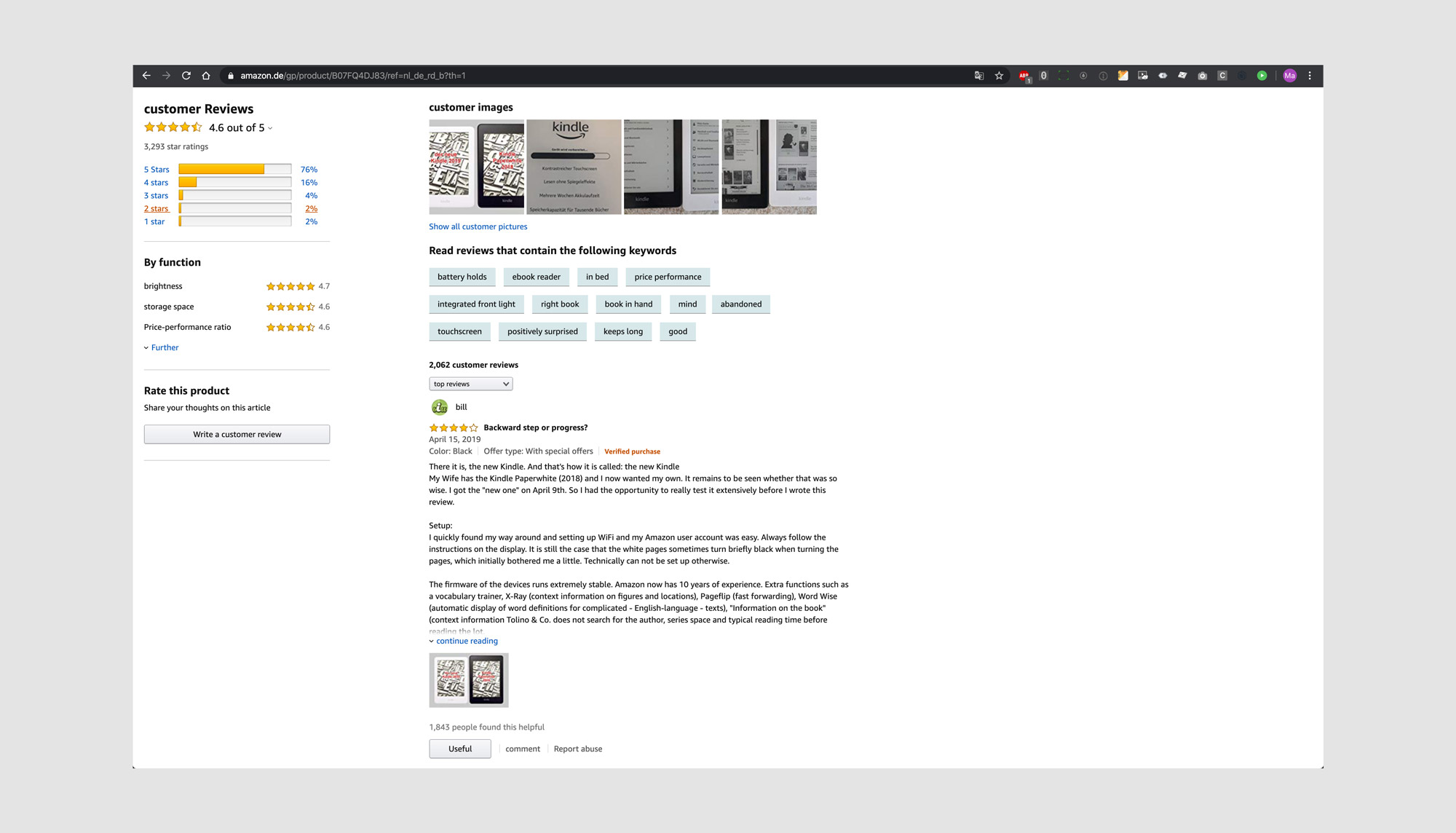
– Have a clear section of where customers can contact you in case of issues
– Have a clear return and refund policy. Make sure to place it in a location that shoppers will find easily. - Delivery is too slow (16%)
Issue: You found the perfect item for Christmas, a birthday, piece of clothing to match that dress. You are ready to purchase, until you see it will take 6 weeks to order. More than 40% of all spending in e-commerce comes from impulse purchases (source: Invespcro.com). These guys are most likely not willing to wait for a few weeks to get their goods and will abandon their shopping cart.
Solution: This really has more to do with your order fulfilment system. Have you invested in an automated email system and automation of your stock order? If this is not within the realm of possibilities, perhaps you could offer your clients two delivery speeds at a different cost. A faster, more expensive (express) option and a slower (free?) option. - Website crashes, is slow or not mobile friendly (15%)
Issue: The website you are trying to purchase items off keeps crashing or takes forever to load. You end up frustrated and it will result in an abandoned cart. You are not alone, according to a 2018 research, 53% of mobile users will leave a site if it takes longer than three seconds to load. Yep you read that right, a mere 3 seconds. (source: Thinkitwithgoogle.com)
Solution:
– Check your site speed here: Google insights
– Always be sure to check your website from a mobile and tablet device - Return policy is unclear or unsatisfactory (10%)
Issue: You are not sure if the product you have purchased fits your needs. What happens if you do not like it and need to return it? The policy of the e-commerce site is not clear so you decide to abandon cart and shop elsewhere.
Solution: Researchers from the University of North Carolina at Chapel Hill and Georgia State University discovered that “a satisfactory product return experience can lead to increases in customers’ future purchases and referrals and in the profit they yield for the company.” sloanreview.mit.edu
It’s not just about the actions in the policy, it’s also very much about the wording that is used. If your return policy is not written in a clear language, consumers will decide to shop elsewhere. Here are some examples of how to write a good return policy that will have an effect on your sales: Bigcommerce.com - Not enough payment methods available online (6%)
Issue: You have filled out all the forms, chosen your preferred shipment option now it’s time to pay. However you don’t have a credit card and there are no other options available. So you abandon cart and go to a different e-commerce site.
Solution: Check what the main payment options are in your selling countries and be sure to offer them on your e-commerce site. (ex: Netherlands uses iDEAL, while the USA is a big proponent of Paypall and in China consumers are used to paying directly via WeChat). There are a few standard options we recommend you offer: Paypall, Apple Pay, Google Pay and the major credit cards Visa and Mastercard.
If you want to be even more user friendly, you would look into the option to save payment and shipping details, for example using Paypal, Amazon Checkout and Visa Checkout. This will save consumers from having to fill out 90% of the form. - Credit Card was declined (4%)
This is very similar to point nine, so have a look if you can find an answer there.
Cart abandonment solutions: Go the extra mile
Some of your consumers are browsing online: Virtual window shopping, compiling a wish list, gift shopping comparing prices etc. These consumers will be harder to convince with optimisation of the website, this is where a strong retargeting strategy should come into place.
Right, what do I do to get these consumers back?
A. SET UP ABANDONED CART EMAIL: What is an abandoned cart email exactly? It is a term used for an automated email that is sent to your potential customers who have left products in their cart but who have not bought these products yet. Did you know that 45% of all abandoned cart emails are opened?
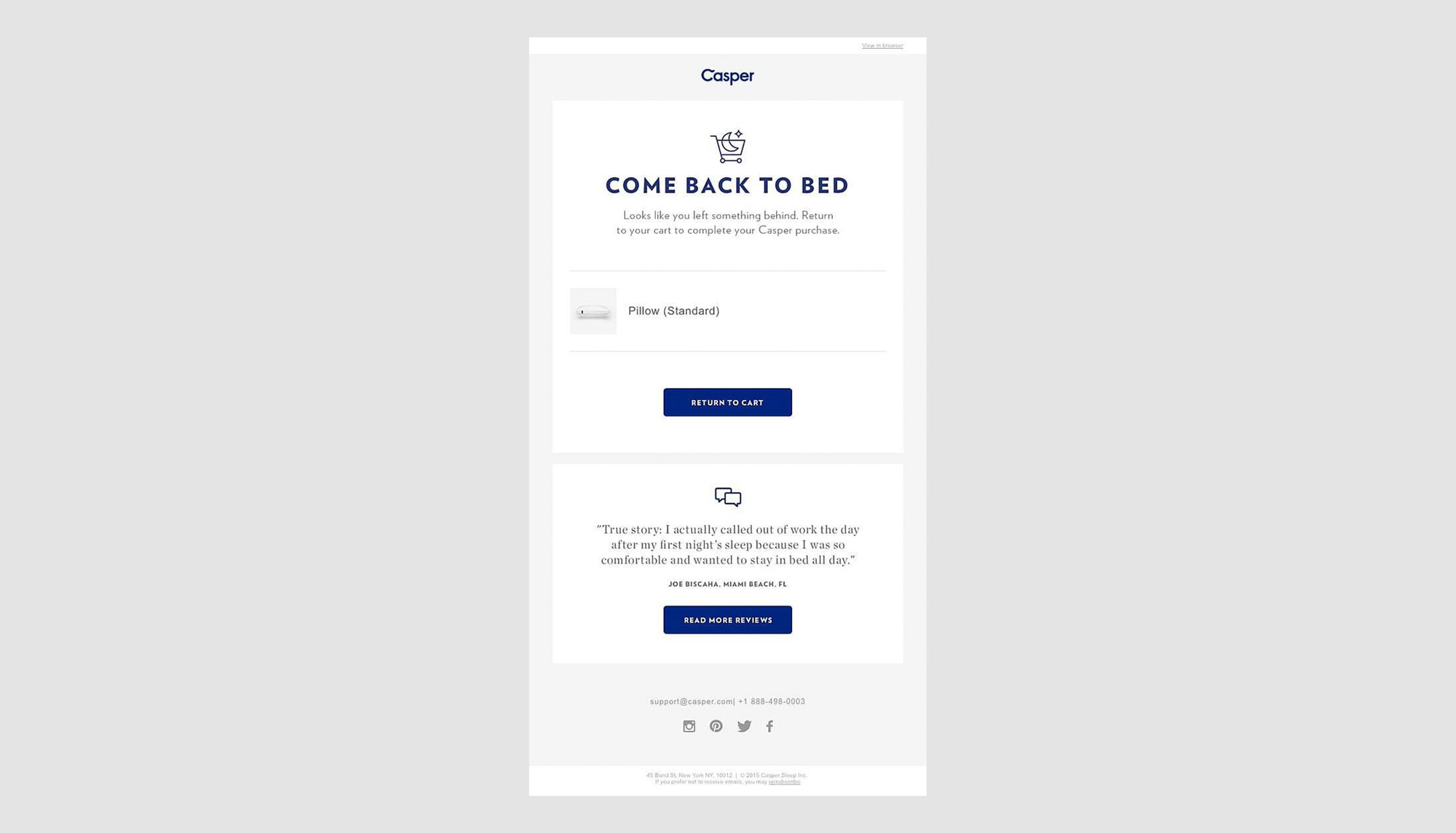
B. AD PIXELS: Make sure to add an ad-pixel to our checkout page, this will allow you to track who came on your page but left without purchasing items. You can then re-target these users via various platforms including Google and Facebook.
Everything you need to know about starting up a retargeting strategy: https://blog.hubspot.com/

